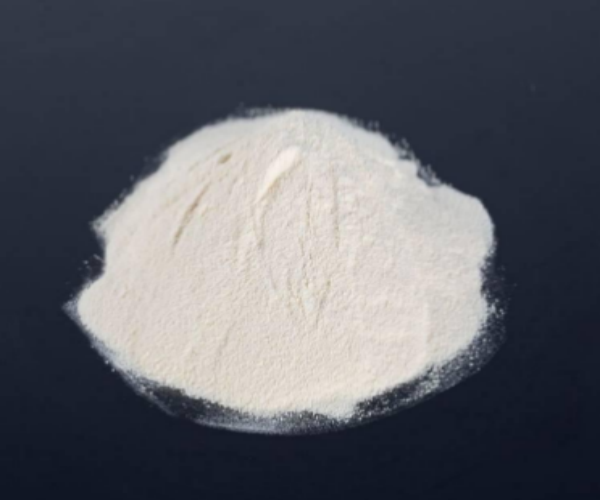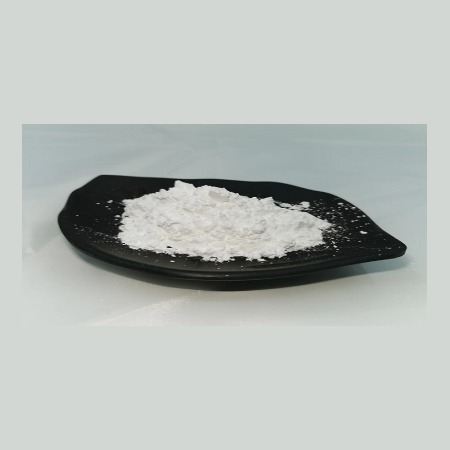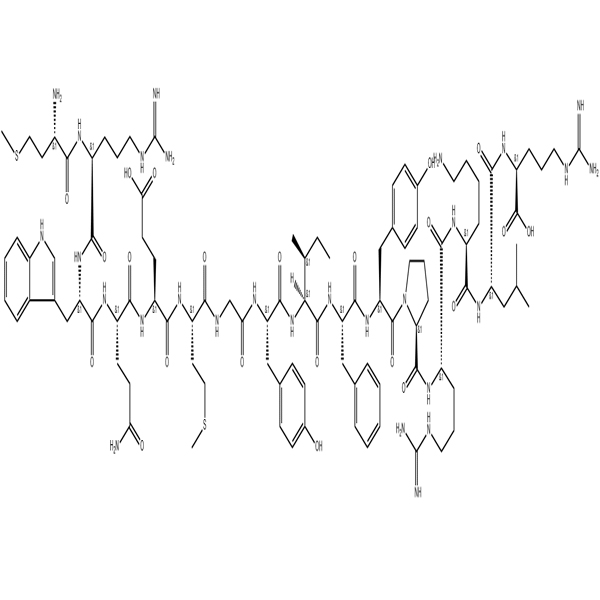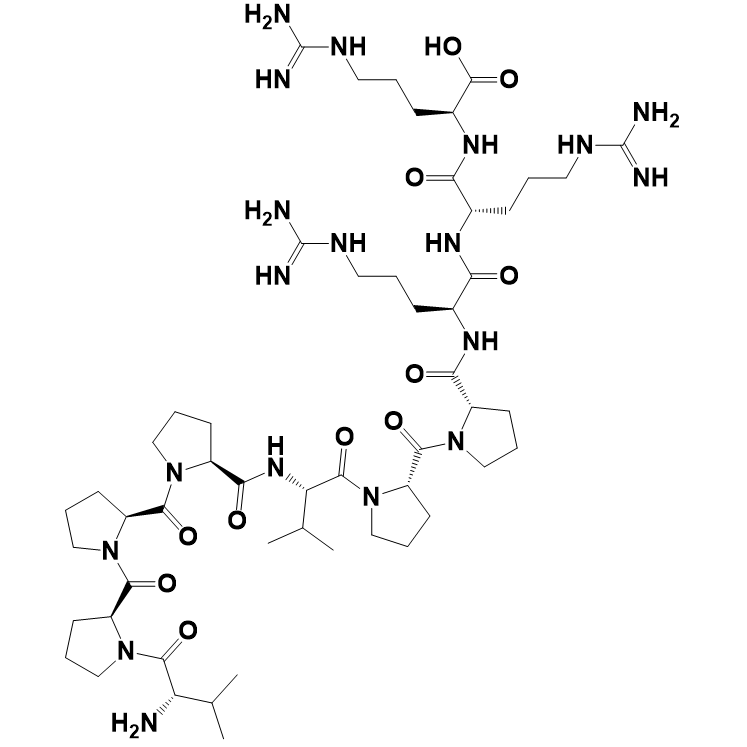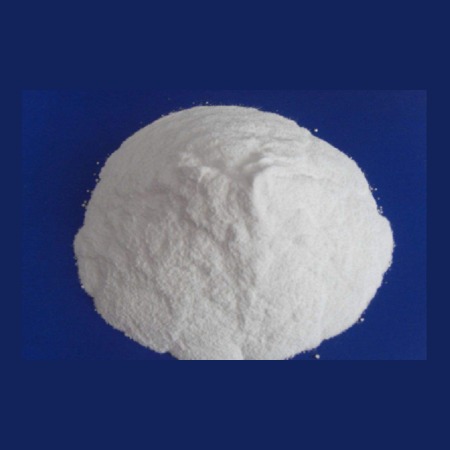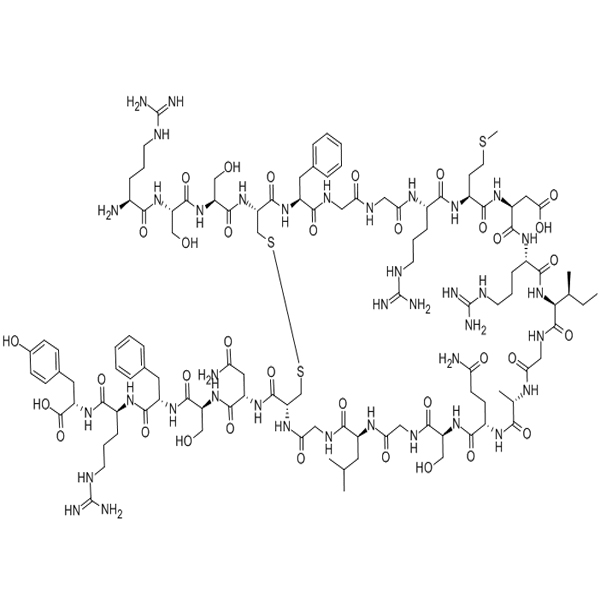ZP7570(dapiglutide) vendor/2296814-85-0/Peptide analysis
Description
Dapiglutide (ZP7570) is a long-acting glucagon-like peptide 1R (GLP-1R)/glucagon-like peptide 2 receptor (GLP-2R) dual agonist. Dapiglutide can be used in short bowel syndrome (SBS) research to alleviate intestinal insufficiency in a mouse model of short bowel, with anti-obesity effects.
Specifications
Apperance: White to off-white powder
Purity(HPLC): ≥98.0%
Single Impurity: ≤2.0%
Acetate Content(HPLC): 5.0%~12.0%
Water Content (Karl Fischer): ≤10.0%
Peptide Content: ≥80.0%
Packing and Shipping: Low temperature, vacuum packing, accurate to mg as required.
FAQ:
Which end is best for my research?
By default, the peptide ends with an N-terminal free amino group and a C-terminal free carboxyl group. The peptide sequence often represents the sequence of the mother protein. In order to be closer to the mother protein, the end of the peptide often needs to be closed, that is, n-terminal acetylation and C-terminal amidation. This modification avoids the introduction of excess charge, and also makes it more able to prevent exonucliase action, so that the peptide is more stable.
Which modified labeled polypeptides can be synthesized in Chinese peptide?
Our company provides a variety of modified peptide labeling, such as acetylation, biotin labeling, phosphorylation modification, fluorescence modification, can also be customized according to your special needs.
How do you dissolve polypeptides?
The solubility of polypeptide depends mainly on its primary and secondary structure, the nature of modification label, solvent type and final concentration. If the peptide is insoluble in water, ultrasound can help dissolve it. For basic peptide, it is recommended to dissolve with 10% acetic acid; For acidic peptides, dissolution with 10%NH4HCO3 is recommended. Organic solvents can also be added to insoluble polypeptides. The peptide is dissolved in the least amount of organic solvent (e.g., DMSO, DMF, isopropyl alcohol, methanol, etc.). It is highly recommended that the peptide be dissolved in the organic solvent first and then slowly added to water or other buffer until the desired concentration.
What are the best preservation conditions? How stable is the peptide?
After lyophilized, polypeptide can form fluff or flocculant powder, which can avoid premature degradation of polypeptide. Recommended storage conditions: a. -20℃ storage or dry environment b. Try to avoid repeated freeze-thaw c. Try to avoid storage in solution state (freeze-dried powder can be stored in separate packages for convenience of use) d. If it must be stored in solution, it is recommended to dissolve the peptides in sterile water under weakly acidic conditions and store at -20℃.
How do I store peptides?
Usually the peptide product you receive is lyophilized powder packaging, please store the peptide in a dry, dark -20°C freezer immediately after receiving the sample to maintain the peptide stability as much as possible. Before use, place the polypeptide packaging tube from the freezer to a dry condition at room temperature, and allow the temperature to naturally warm to room temperature before opening the cap. Otherwise, water vapor in the air will enter the sample tube when the lid is opened, reducing peptide stability. Once opened, it should be weighed quickly and immediately sealed to avoid deliquescent, and hydrophilic peptides should be more careful to avoid repeated freezing and thawing. Outside temperature during short-term transportation will not affect the shelf life and quality of peptides.What is the direction of synthesis of peptides?
Peptide synthesis is from the C-terminus to the N-terminus of the polypeptide.
What is net weight? What is peptide content?
After lyophilized peptide is generally fluffy and fluff-like, it may still contain trace amounts of water, adsorbed solvents and salts due to the characteristics of peptide itself. This does not mean that the purity of the peptide is not enough, but that the actual content of the peptide is reduced by 10% to 30%. The net weight of the peptide is the actual weight of the peptide minus the water and protonated ions. In order to ensure the concentration of peptide, the non-peptide substances need to be removed from the crude peptide.

